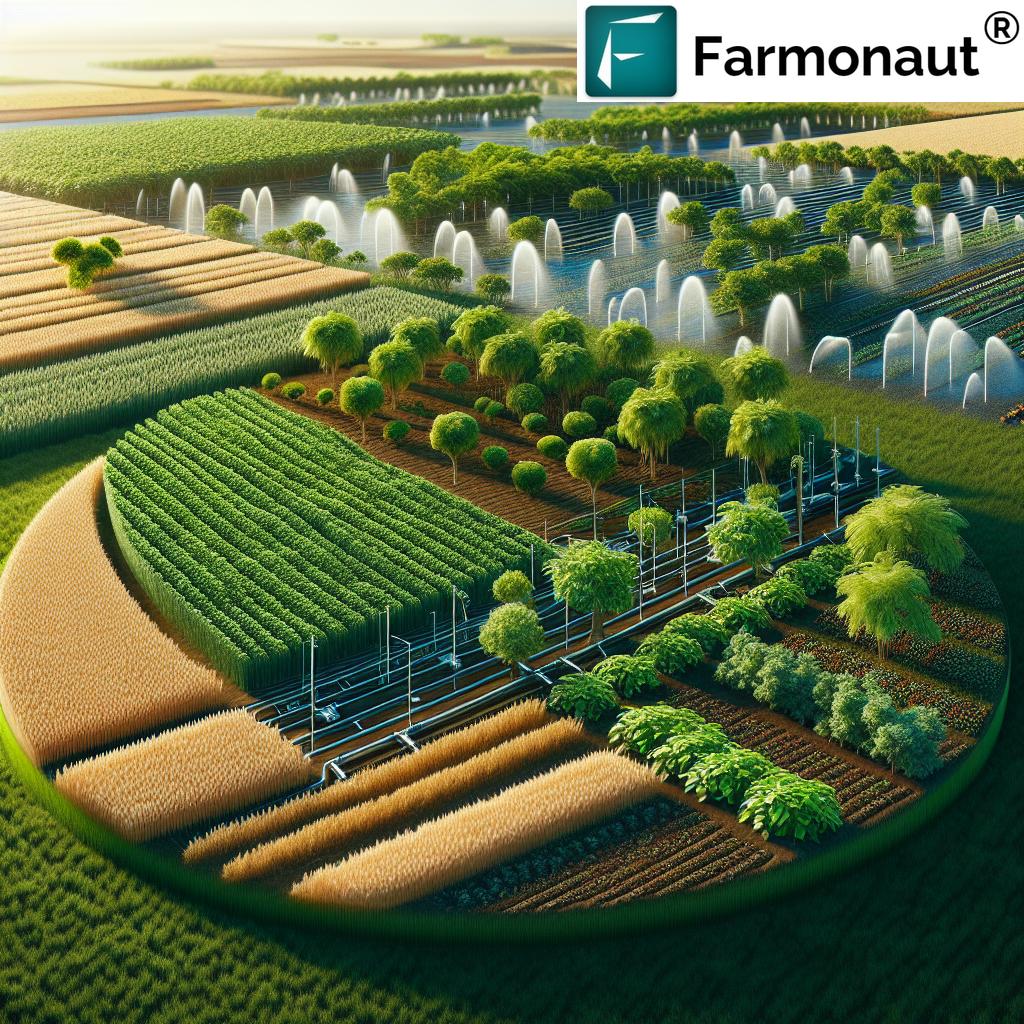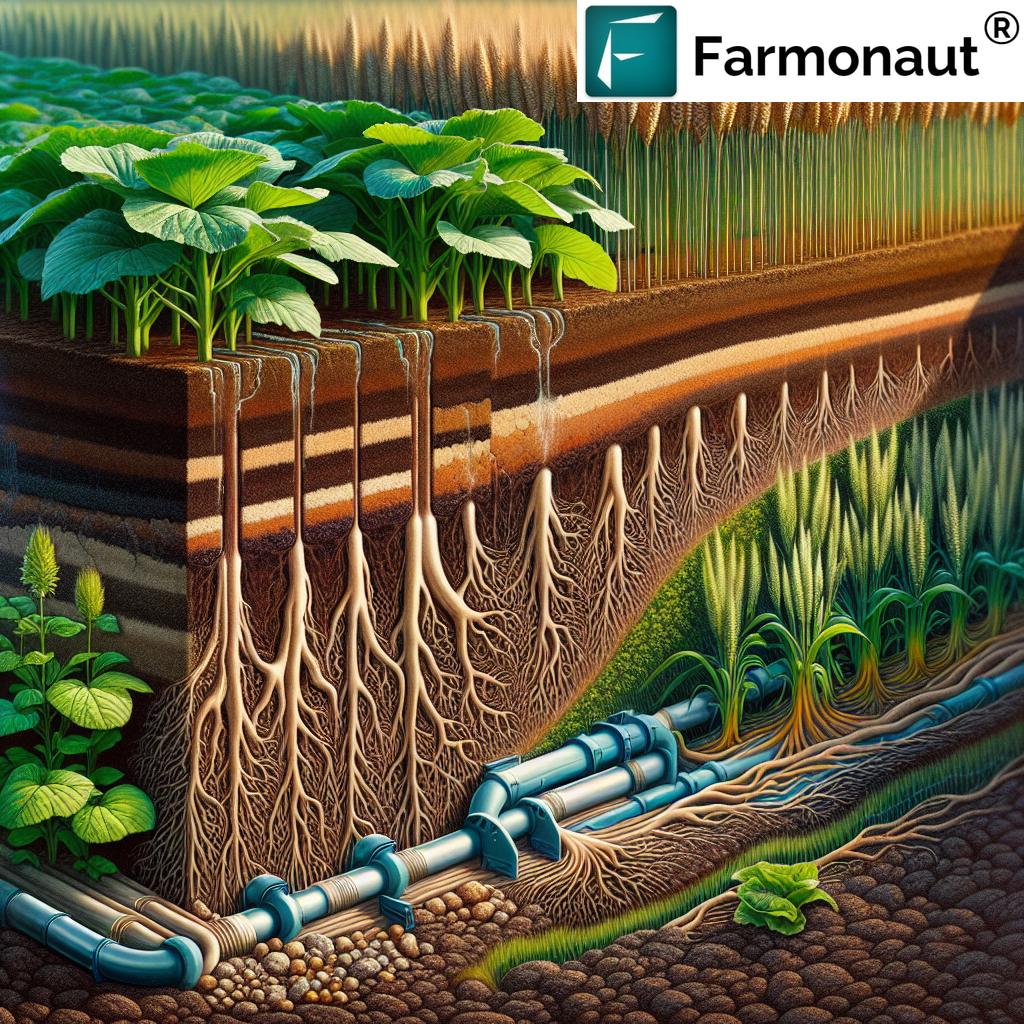Stages of Agriculture: 9 Key Advances Worldwide
“Over 10,000 years ago, humans began domesticating plants, sparking the first agricultural revolution.”
Agriculture, the backbone of our civilization and prosperity, has evolved through remarkable stages of innovation, adaptation, and collective wisdom. As we explore the history of agriculture, we discover powerful stories of crop cultivation, soil fertility management, changes in farming systems, sustainable agriculture practices, and the rise of groundbreaking technologies. Today, our path toward a greener future relies on integrating these past lessons with precision tools and sustainable advances.
1. The Origins of Agriculture: Dawn of Crop Cultivation
Our journey begins in the Near East, also known as the Fertile Crescent, and in regions such as the Indus Valley and ancient China. The transition from hunter-gatherer societies to settled agricultural communities around 10,000–11,000 years ago marks the Neolithic Revolution—a defining milestone in the history of agriculture.
- First Cultivations: Domestication of wheat and barley near the Tigris and Euphrates rivers.
- Early Irrigation: Floodplain farming along the Nile in Egypt and the Yangtze in China fostered rice and cereal growth.
- New Settlements: Communities in the Americas domesticated maize, beans, and squash, setting the stage for indigenous agricultural systems.
The origins of crop cultivation forever changed human societies, enabling food surpluses, population growth, and the rise of complex settlements. Soil fertility management began with simple crop cycles and land rejuvenation, laying ground for crop yield improvements still relevant today.
2. Early Agricultural Practices: The Seeds of Agricultural Advancement
Early agricultural practices revolved around the domestication of plants and animals. In the Indus Valley, settlements established in 4,500 BC pioneered irrigation systems in agriculture, planned drainage, and early sewers. Innovations such as animal-drawn ploughs by around 2,500 BC showcased humanity’s relentless drive for better farming systems.
- Soil Preparation: Manual tillage gave way to primitive ploughs pulled by oxen or cattle.
- Resourceful Irrigation: Canals and ditches managed vital water resources in arid climates, improving crop reliability.
- Cultural Exchanges: Diverse plants and animals spread between regions via trade networks in the Middle East and beyond.
These foundational achievements in farming and water management unlocked new crop opportunities—and set a blueprint for evolution of farming systems worldwide.
3. The Rise of Civilizations and Advanced Techniques
With stable food supplies, societies in Mesopotamia, Egypt, the Indus Valley, and mainland China advanced both socially and technologically. The Sumerians in the Near East constructed extensive irrigation canals from the Tigris and Euphrates rivers, propelling agricultural advancements on a previously unseen scale.
- Irrigation Mastery: Sumerian, Egyptian, and Indus Valley farmers channeled rivers—Nile, Tigris, Euphrates—using levees and canals. Nile flooding cycles replenished soil fertility for wheat, barley, and flax.
- Plough Innovation: Early wooden ploughs evolved, turning more earth and boosting aeration and drainage.
- Urban Development: Agricultural surpluses led to the rise of cities, specialized crafts, and flourishing trade in fiber, food, medicinal plants, and more.
Remarkably, these breakthroughs formed the core of many sustainable agriculture practices: using floodplain nutrients, rotating crops, and harnessing environmental cycles to maximize outputs and maintain long-term soil health.
4. The Middle Ages and Agricultural Expansion: Crop Rotation and Diversity
During the European Middle Ages, new crop rotation techniques transformed farming—while societies in the Americas developed unique, indigenous agricultural systems. The three-field system, where different crops rotated across three fields, improved soil fertility and harvest security.
- Rotation and Fertility: Alternating wheat/barley, legumes, and fallow improved nutrient cycling and minimized soil exhaustion.
- New Implements: Iron-plough innovations, windmills, and watermills increased labor productivity.
- Sustainable Synergy in the Americas: The “Three Sisters” (maize, beans, squash) method provided mutual plant support, resource efficiency, and natural pest management—a precursor to modern sustainable agriculture.
This period shows the critical impact of farming systems evolution on yields, resilience, and the well-being of communities—a tradition that continues to guide us in addressing new challenges like climate change.
“Modern precision irrigation can reduce water usage in farming by up to 50% compared to traditional methods.”
5. The Agricultural Revolution: Mechanization and Scientific Progress
The Agricultural Revolution of the 17th–19th centuries rapidly accelerated global food production. This era introduced systematic breeding, scientific crop management, and mechanization—marking a shift to large-scale output and the roots of industrial farming.
- New Implements and Efficiency: Jethro Tull’s seed drill (1701) mechanized seeding with accuracy, while improved horse-drawn ploughs and threshers spurred field productivity.
- Selective Breeding: Livestock and crop yields were enhanced by selecting for favorable traits, increasing food and fiber supply.
- Rotation Refined: Advanced four-field crop rotation further diversified crops and restored soil health, building resilience against pests and disease.
These agricultural advancements boosted yields, improved resource use, and laid the foundations for today’s global food systems—while also introducing new pressures on landscapes and natural ecosystems.
Did you know? Farmonaut’s advanced farm fleet management technology empowers large agribusinesses to optimize machinery use, save fuel, and minimize operational costs through satellite-based insights.
6. The Green Revolution: Intensification and Its Impact
The 20th century’s Green Revolution transformed agriculture yet again—particularly in developing countries facing food insecurity. It brought high-yielding crop varieties (HYVs), synthetic fertilizers, pesticides, and efficient irrigation, leading to unprecedented yield surges in crops like wheat and rice.
- New Varieties: Intensive breeding programs boosted productivity, especially for wheat, rice, and maize in Asia and Latin America.
- Resource Inputs: Chemical fertilizers and mechanized irrigation supported denser planting and double/triple-cropping cycles.
- Challenges Emerged: Heavy chemical use and monoculture contributed to soil depletion, pollution, and loss of crop biodiversity—fueling a global shift toward sustainable agriculture practices.
Farmonaut’s real-time carbon footprinting solution empowers agribusinesses and farmers to monitor and manage their environmental impact for compliance, sustainability, and reduced emissions.
7. Sustainable Agriculture and Modern Practices: Farming for the Future
Environmental challenges and the impact of climate change on farming gave birth to modern sustainability principles: using agricultural land efficiently, conserving biodiversity, and regenerating natural resources.
- Conservation Tillage: Reducing tillage intensity prevents soil erosion and moisture loss.
- Integrated Pest Management (IPM): Utilizing biological controls and minimal chemicals reduces environmental impact while ensuring crop health.
- Agroforestry: Incorporating trees and shrubs into cropping systems enhances resilience, sequesters carbon, and buffers ecosystems against climate volatility—the role of agroforestry in agriculture is now seen as vital for sustainable land management.
We can harness Farmonaut’s Jeevn AI Advisory System to deliver personalized, real-time insights (like weather or crop health forecasting) to maximize both sustainability and productivity—right from our mobile or web device.
For developers: Explore Farmonaut’s agriculture and weather API or view the API developer documentation for seamless integration and data-driven innovation.
Sustainable Agriculture at Scale: Technology + Tradition
Combining advanced satellite technology, AI, and the time-tested practices of crop rotation, minimal tillage, and integrated resource management, we can build resilient food systems ready for the challenges of our changing world.
Discover our comprehensive management services for crop, plantation, and forestry advisory in one platform:
Farmonaut Crop, Plantation & Forest Advisory App.
8. Forestry and Its Role in Agriculture: Ecosystem Stewardship
Forests and agriculture have always been deeply intertwined. Forestry—the active management of forested land—ensures a constant supply of fiber, fuel, timber, and medicinal plants, while also delivering essential ecosystem services.
- Soil Fertility: Leaf litter and organic matter from forests enrich and rejuvenate adjacent agricultural soils.
- Water Regulation: Forested landscapes stabilize water cycles, promoting reliable irrigation and reducing flood risks.
- Biodiversity: Forest belts support beneficial insects, pollinators, and pest predators, increasing both farm productivity and ecological resilience.
- Sustainable Forestry: Practices like selective logging and reforestation ensure that both economic and ecological needs are met for future generations.
Strong, regenerative links between forestry and agriculture are key to resilient, long-term food security. Farmonaut’s precision satellite solutions can be used for forest monitoring and sustainable resource management as part of agroforestry or conservation programs.
Explore Farmonaut’s Blockchain Product Traceability—ensuring transparent, secure supply chains for crops, timber, fiber, and other products.
9. The Future of Agriculture: Data, Technology, and Urban Innovation
The coming decades will redefine farming through the fusion of data-driven insights, sustainable agriculture practices, and new ways to interact with the land—even in urban environments.
- Precision Agriculture: Tools like GPS, remote sensing, and IoT allow farmers to monitor crop health, soil moisture, and optimize inputs efficiently.
- Satellite & AI Technology: Advanced platforms such as Farmonaut enable real-time crop health monitoring, resource optimization, and AI-based advisory for both smallholders and large-scale producers.
- Urban & Vertical Farming: Urban agriculture and stacked vertical farms help produce food locally, reducing transport emissions and supporting urban food security.
- Climate Change Adaptation: On-farm carbon footprinting, drought-resilient crop breeding, and smart irrigation will all be vital responses in a warming world.
With challenges like population growth, climate volatility, and resource constraints looming, the next stage of agricultural advancement must be one of integration—drawing wisdom from history, tradition, and the most innovative technology available.
Comparative Timeline Table: Advances in the History of Agriculture
| Stage/Advance Name | Estimated Time Period | Description of Technological Advance | Impact on Crop Yield (% Increase) | Key Sustainable Practice Introduced | Example Region(s) |
|---|---|---|---|---|---|
| Origins of Agriculture | 10,000 – 8,000 BCE | Domestication of wheat, barley, rice, maize; transition from foraging to farming. | ~200% vs. foraging | Early soil fertility management, fallowing | Near East, Indus Valley, China, Americas |
| Early Agricultural Practices | 4500 – 2500 BCE | First irrigation systems, planned settlements, animal-drawn ploughs | 30–50% over previous yields | Irrigation, crop selection | Indus Valley, Near East |
| Rise of Civilizations | 3500 – 1500 BCE | Canal irrigation, Nile flooding, early urban agronomy, trade in cereals & fiber | 40–80% | Flood irrigation, environmental feedback | Sumerians, Egyptians, Nile, Tigris/Euphrates |
| Middle Ages Expansion | 500 – 1500 CE | Three-field crop rotation, watermills, windmills, “Three Sisters” companion planting | 20–40% | Crop rotation, mixed cropping | Europe, Americas |
| Agricultural Revolution | 17th–19th century | Seed drills, improved ploughs, systematic selective breeding | 30–50% | Intensive rotation, science-based selection | Europe, Americas |
| Green Revolution | 1940s–1970s | HYVs, synthetic fertilizer, mechanized irrigation | 200–300% | High input efficiency (but later reevaluated) | Asia, Latin America |
| Sustainable & Modern Practices | 1980s – present | Conservation tillage, IPM, agroforestry, precision agriculture | Up to 20–30% (with resource savings) | Resource conservation, biodiversity | Global |
| Forestry & Agriculture Integration | Ongoing | Agroforestry, sustainable logging, reforestation | Long-term resiliency | Ecosystem services, carbon sequestration | Worldwide |
| Digital & Precision Agriculture | 2000s – future | Satellite remote sensing, AI, urban/vertical farms | 10–50% input optimization, major resource/impact reductions | Data-driven management, minimal input | All continents, urban centers |
Farmonaut: Powering the Next Era of Agricultural Innovation
At every stage of agriculture’s evolution, new tools and insights have emerged. In our era, Farmonaut shines as a trailblazer, democratizing access to smart, satellite-powered, and AI-driven farming. Our mission is to deliver cost-effective, actionable intelligence for farmers, agribusinesses, governments, and researchers worldwide—catalyzing the next age of precision, productivity, and sustainability.
- Satellite-Based Crop Monitoring: Multispectral imagery enables us to assess vegetation health (NDVI), soil moisture, and pest/disease outbreaks on any scale—instant insights for smarter water, fertilizer, and input planning.
- Jeevn AI Advisory: Personalized, real-time farm and weather advisory empowers every farmer, reducing guesswork and boosting crop yields sustainably.
- Blockchain Traceability: Full transparency for buyers, consumers, and certification—ensuring origin and authenticity from farm to shelf. Read more
- Resource & Fleet Management: Satellite-aided fleet tracking and input optimization cut costs, streamline logistics, and extend asset lifespans for agribusinesses and cooperatives. Learn more about large scale farm management
- Carbon Footprint Tracking: Real-time emissions monitoring guides environmental compliance and green branding.
These technologies help address today’s key challenges in agriculture: food security, resource depletion, climate adaptation, increased yields, transparent markets, and resilient ecosystems.
Frequently Asked Questions: Stages of Agriculture & Sustainable Farming
What is the overall significance of the evolution of farming systems?
- The evolution of farming systems—from basic crop cultivation and animal raising to digital and precision farming—has enabled humanity to support larger populations, diversify diets, and overcome local and global challenges.
- Each stage brought agricultural advancements that increased yields, improved food security, and made farming more sustainable and resilient.
How do sustainable agriculture practices help address climate change?
- Sustainable practices like conservation tillage, crop rotation techniques, agroforestry, and carbon footprinting minimize emissions, enhance soil health, and make farms more adaptive to extreme weather.
- Satellites and AI provide real-time data for adaptation—allowing farmers to optimize irrigation, limit chemical inputs, and restore soil and biodiversity.
What role does precision technology play in future agriculture?
- Precision technology enables us to use resources efficiently, reducing waste, costs, and environmental impact.
- Weather data, soil mapping, aerial imagery, and blockchain traceability help smallholders and large-growers alike to monitor, plan, and verify every stage of the agriculture cycle, thus assuring productivity and trust for all stakeholders.
How are soil fertility and crop rotation linked in sustainable agriculture?
- Regular crop rotation disrupts pest and disease cycles, restores nutrients, and maintains long-term field productivity, reducing dependency on chemical fertilizers and enhancing soil structure.
- Soil health monitoring (such as using NDVI and organic carbon tracking with remote sensing) becomes a critical part of sustainable agriculture.
How can urban farmers benefit from Farmonaut’s solutions?
- Urban and peri-urban farmers can leverage satellite data, crop health monitoring, and digital advisories to maximize their yields—even in non-traditional growing environments like rooftops or vertical farms.
Where can I access Farmonaut’s technology and services?
- Web/App: Use our web or mobile app for real-time, actionable data.
- APIs for developers: Integrate our satellite and weather technology into your own solutions using our public API and developer docs.
Conclusion
From the origins of wheat in the Near East, rice in China, and maize in the Americas, to the digital and satellite-driven agriculture of today, each pivotal stage has shaped our society, environment, and food system. The history of agriculture is a testament to our adaptability, creativity, and commitment to progress.
Yet, the journey doesn’t end here. Meeting the needs of a growing population amid climate and resource challenges will require us to integrate time-honored wisdom with the most advanced technology—ensuring prosperity and sustainability for generations to come. At Farmonaut, we’re passionate about making these solutions accessible to all farmers, everywhere, powering a more resilient, transparent, and greener future.
Ready to elevate your farm management with precision insights, blockchain traceability, and sustainable resource optimization? Get started with Farmonaut today!











